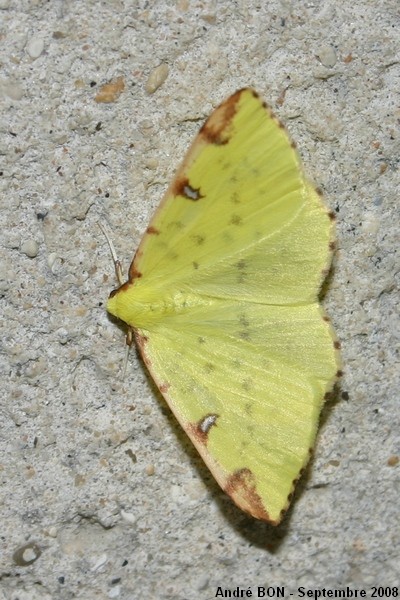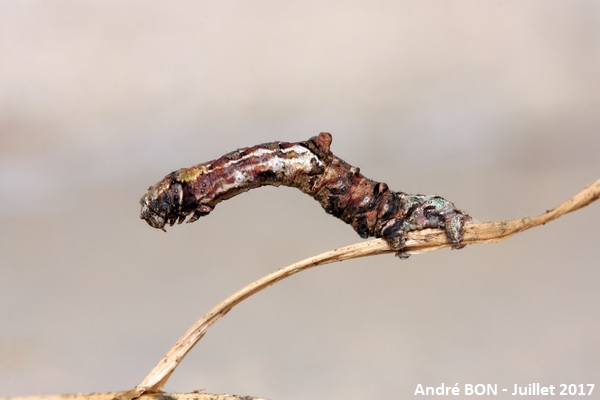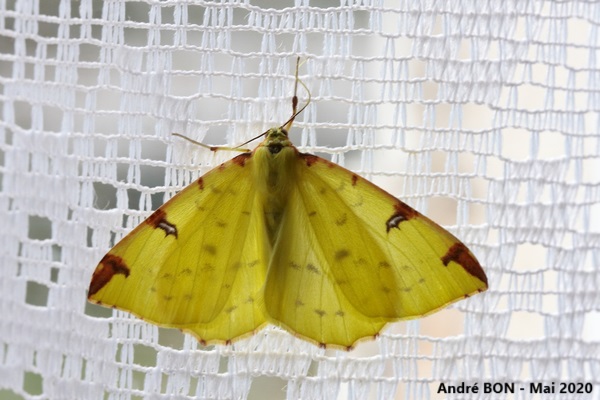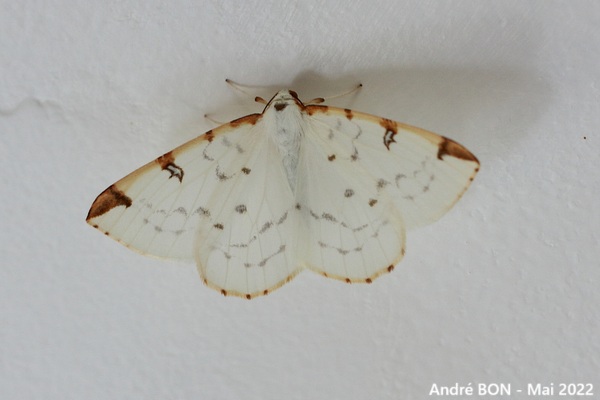



| Brimstone Moth (Opisthograptis luteolata (Linnaeus, 1758)) |




|
|
Scientific name: Opisthograptis luteolata (Linnaeus, 1758) Common name: Brimstone Moth Other names: Other scientific names: Phalaena crataegata, Phalaena luteolata, Rumia provincialis. French name: Citronnelle rouillée, Phalène de l'Alisier Order: Lepidoptera Suborder: Heterocera Family: Geometridae Subfamily: Ennominae Wingspan: 32 to 38 mm. Moths of the first spring generation are usually larger than those of the following generations. Biotope: Woodlands, woodland edges, parks, gardens with trees, unimproved areas with trees. Geographic area: Europe, from northern Spain to Scandinavia, Near East, Central Asia. Flight time: April to October. Number of generations : 2 to 3. Caterpillar: Greyish green or greyish brown with a red protuberance on the sixth segment. Host plant: Many deciduous trees including Common Hawthorn (Crataegus monogyna), Midland Hawthorn (Crataegus laevigata), Blackthorn (Prunus spinosa), Goat Willow (Salix caprea) and European Rowan (Sorbus aucuparia). |
The wings are bright lemon-yellow with pale brown patches on the outer edge of the fore wings. The discocellular patch is white-centred. The wings are crossed by a line of black dots, sometimes hardly visible and even sometimes missing. The antennae are reddish. The Brimstone Moth over winters as a pupa or as a caterpillar at the last development stage. The Brimstone Moth is active during the night but you can also observe it during the day when disturbed. It is attracted to light. |
| [To know more about the Brimstone Moth] [Next picture] [Top] |

|
I have observed Brimstone Moths in my garden, but I had to wait for one of them to land near the kitchen's window so that I can take a picture. |
| [To know more about the Brimstone Moth] [Next picture] [Previous picture] [Top] |

|
You can clearly see the typical position of the caterpillars of the Geometridae family as well as the reddish-brown bump on the sixth segment, typical of this species. |
| [To know more about the Brimstone Moth] [Next picture] [Previous picture] [Top] |

|
This Brimstone Moth was also attracted to light and even entered the house. I left the window open, with the lights off, so it could fly back to the fresh air. |
| [To know more about the Brimstone Moth] [Previous picture] [Top] |

|
This is an abnormally white specimen. I've only found one reference to this colour anomaly, and that's on the website UK moths. |